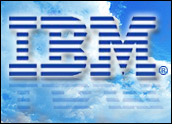
Take SOA (service-oriented architecture) and SaaS (Software as a Service) to their natural maturation and adding more interoperability and integration into the online services mix becomes inevitable. When standardized services come from a variety of sources, then a variety of means to connect them makes more sense too.
So when will we see the first signs of integration as a service? The answer, it turns out, is now.
As the use of Enterprise 2.0 mashups sweeps the IT industry, the concept of converging enterprise services has expanded to hosted munging of business applications and back-office functions.
Shopping Around for Services
Why not then extend SOA itself by embracing more integration services that help vendors, ISVs (independent software vendors) and service providers bring more elements of business processes together too?
The budding notion of “integration as a service” allows enterprise business leaders to “shop around” for their services, regardless of hosting, and opens up the prospect for a thriving new ecology of services and integration models for mission-critical activities … not just for maps and widgets. The advancement to SOA for many companies may well be accelerated by more choices on means of on-demand connections, both inside and outside the organization’s own IT boundaries.
I recently conducted a sponsored BriefingsDirect podcast discussion with Annrai O’Toole, CEO of Cape Clear Software, on the eye-opening prospects for integration as a service. Early adopters are already outsourcing aspects of integration.
The implications are staggering: Business operators and entrepreneurs create and amend complex processes and work flows through a simple point-and-click interface that prompts integration that’s executed on someone else’s infrastructure. Pay by the use or general subscription. Retain control over data and ID management.
Here are some of Annrai O’Toole’s comments:
“A couple of factors are driving this. First, it’s the whole technology maturity thing. Six or seven years ago, the standards around Web services were in their infancy, and people didn’t have a lot of experience with them. Because they were young, unproven, untested and lacking in key bits of functionality, people didn’t really want to go there. Technology is one element of it, but there are a few more important elements driving it as well.
“One is a secular trend toward simplicity and flexibility. At some levels, this has been driven by teams through virtualization. Storage and processing power are being very quickly virtualized. Applications are being virtualized, with Software as a Service, on-demand. There is a long-term shift by customers, who are saying, ‘We don’t want to own complex infrastructure anymore. We’ve been there and done that. We want something else.’
“We had an RFP (request for proposal) come in — and this isn’t all that unusual — from someone looking to do a big SOA initiative. It was — and I’m not joking — a 111-page RFP.
Executives Get It
“Customers look at the choices available to them, and say, ‘Do we want to do all this big SOA integration on our own by buying these complex things, or are we prepared to look at alternatives? And do those alternatives have any reality?’ They do, and many companies are shying away from these big, complex initiatives.
“You can sit in a room with a bunch of executives, both from the business and IT segments and say, ‘Hosted integration is a good idea,’ and they’ll know that. We’ve got some proof points around it. Most notably, one of our marquee customers in the Software as a Service base is Workday. The PeopleSoft founders got together to rebuild an ERP (enterprise resource planning) application, but this time on a hosted basis.
“We’ve seen two fundamental preferences here, and there are two options for what you want to host. The first option we would broadly categorize as very loosely coupled data transformation. A lot of the things that people need to solve in terms of integration problems are really data transformation. How do I take payroll information from one provider, transform it and send it down to another provider?
“Most people can deal with that. Most people can wrap their head around how that can be done in a hosted manner. What’s involved there is that it’s loosely coupled and it’s data. It’s ultimately some kind of XML or it gets converted into XML somewhere along the line.
More Sophistication Coming
“The next thing is a step up from that. Now that I can get information between these things, do I want to have some orchestrations or some kind of inter-company business processes? It’s not just getting data from A to B, but it’s, ‘I want to get data from A to B, and then I want to call C, and when C has completed its job, then I want to call D, and when that’s complete, the whole thing is done.’
“That’s next level of complexity, and it involves a more sophisticated approach. But both of them are possible and both are in operation today. As far as what customers are going to go for, I think they’ll be happy to do data transformation initially, and when that’s really working for them, they might be prepared to take the next step and host business processes in the cloud.
“The whole idea is that they’re taking the integration burden off the customers, so that the customers can integrate their applications with Workday, without having to do any work on the customer end of the connection. This is a huge portion of the unfolding Software as a Service story.
Virtualizing Integration
“As we wind the clock forward, we’re going to see more customers wanting to use on-demand style applications, and wanting integration to be solved in an on-demand way. They don’t want to build all these integrations again. You can also take this one step further. We’ve seen a lot of our enterprise customers, as they think about rolling out big SOA initiatives, are saying, ‘Maybe we should really model ourselves as a mini Software as a Service to our own internal organizations.’
“If we are going to virtualize storage and processing power, we want to virtualize integration. It’s not something that is being rebuilt again and again and again by different companies or different departments within different companies. Let’s really start to move to a hosted model for us and, as you say, these can be federated in a very coherent way.
“What’s new now is that the underlying technologies and standards can actually support that model. So, while this model might have been a pipe dream five or six years ago, today it’s reality, and the technologies and capabilities are there to do it.
“As the Web 2.0 generation gets into the enterprise, they’re going to have a very different view of how things should be done. They want it done the way that they have experienced this medium as teenagers. They’ll say, ‘What do you mean you can’t do it the way I want to do it?’ I certainly hope that that’s the way it turns out, because we are just about due for another major innovation in the application development lifecycle.”
Dana Gardner is president and principal analyst at Interarbor Solutions, which tracks trends, delivers forecasts and interprets the competitive landscape of enterprise applications and software infrastructure markets for clients. He also producesBriefingsDirect sponsored podcasts. Disclosure: Cape Clear Software is a sponsor of BriefingsDirect business productivity podcasts.









































Social Media
See all Social Media